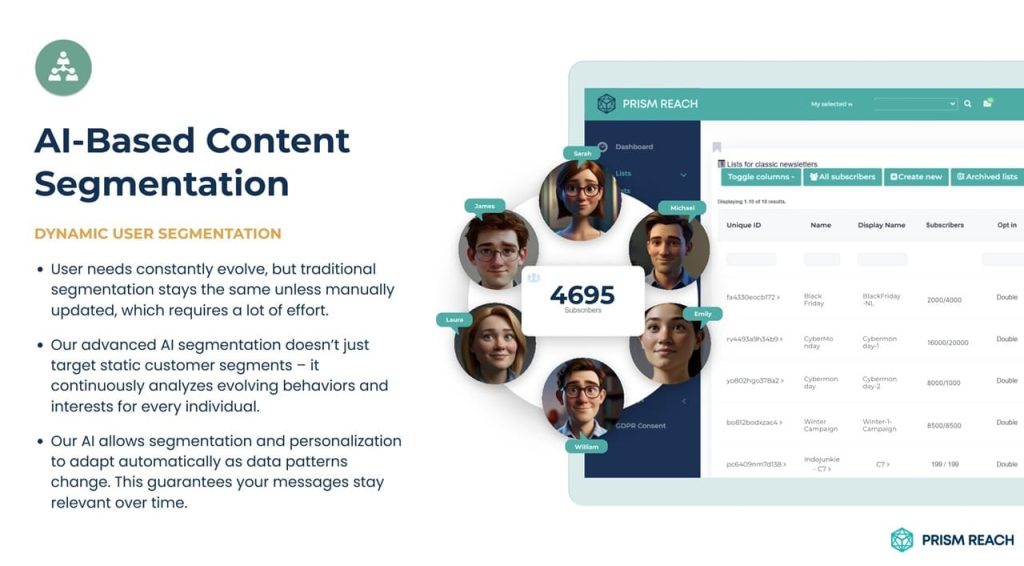In the ever-evolving landscape of digital marketing, email remains a cornerstone for businesses aiming to connect with their audience and drive conversions. As we navigate through 2024, understanding the latest email marketing ROI statistics is crucial for optimizing campaigns, enhancing engagement, and maximizing return on investment (ROI). This comprehensive guide delves into the most compelling statistics, uncovering hidden gems that can significantly boost your email marketing effectiveness. Whether you’re a seasoned marketer or just starting, these insights will empower you to refine your strategies and stay ahead of the curve.

Key Email Marketing Statistics
Email marketing continues to demonstrate its unparalleled effectiveness in the digital arena. Here are some key statistics that highlight its significance:
- Global Reach: As of 2024, there are approximately 4.3 billion email users worldwide, providing an expansive audience for email marketers.
- Daily Traffic: An astounding 347.3 billion emails are sent and received each day, presenting both challenges and opportunities for marketers to capture attention in crowded inboxes.
- ROI: For every $1 spent on email marketing, businesses can expect an average return of $36, making it one of the most cost-effective marketing strategies.
- Personalization Impact: Personalized emails generate up to 760% more revenue, highlighting the power of targeted content.
- Mobile Optimization: Approximately 50% of all emails are opened on mobile devices, emphasizing the need for mobile-friendly designs.
Upgrade Your Email Marketing with AI Personalization!
Hidden Gem Strategies to Enhance Email Marketing ROI
While foundational statistics provide a broad overview, delving into lesser-known strategies can unlock new levels of effectiveness in your email marketing campaigns. Here are five “hidden gem” strategies that are not widely recognized but can significantly enhance your email marketing efforts:
Zero-Party Data Collection
Strategy: Actively collect zero-party data by asking customers for their preferences and interests during sign-up or through surveys.
- Effectiveness: High; using this data allows for highly personalized campaigns, leading to better engagement and conversion rates.
- Obscurity: Many marketers rely on inferred data rather than directly asking customers for their preferences.
- Ease of Implementation: Simple to implement with forms or surveys integrated into your email campaigns.
- Uniqueness: Focuses on customer-driven insights, enhancing trust and relevance in communications.
Example: During the sign-up process, include a short survey asking subscribers about their interests, favorite products, or content preferences. This direct approach ensures you receive accurate data that can be used to tailor your email content precisely to their needs.
Trigger-Based Email Campaigns
Strategy: Implement trigger-based emails that automatically send based on user actions (e.g., cart abandonment, browsing behavior).
- Effectiveness: Triggered emails can generate up to 24 times more revenue than traditional emails and have significantly higher engagement rates.
- Obscurity: While many use automated emails, the specific focus on triggers is often underutilized.
- Ease of Implementation: Requires initial setup but can be automated once established.
- Uniqueness: This strategy capitalizes on immediate user behavior, making emails more timely and relevant.
Example: When a user abandons their shopping cart, automatically send an email reminding them of the items left behind, possibly including a discount code to encourage completion of the purchase.
Send-Time Optimization
Strategy: Use algorithms to determine the optimal send time for each subscriber based on their past behavior.
- Effectiveness: Sending at the right time can increase open rates by up to 30%, boosting overall campaign performance.
- Obscurity: Many marketers send emails at a fixed time without considering individual recipient behaviors.
- Ease of Implementation: Requires tools that support send-time optimization but is increasingly available in email platforms.
- Uniqueness: This approach personalizes the delivery of emails, enhancing user experience and engagement.
Example: Analyze past email interactions to determine when each subscriber is most likely to open their emails. Use this data to schedule future sends at those optimal times, ensuring higher engagement.
Behavioral Segmentation
Strategy: Segment your audience based on their behavior (e.g., purchase history, website interactions) rather than just demographics.
- Effectiveness: Behavioral segmentation can lead to a 760% increase in revenue, as it allows for more targeted messaging.
- Obscurity: Many marketers still rely heavily on demographic data without exploring behavioral insights.
- Ease of Implementation: Requires data analysis but is increasingly supported by modern email marketing tools.
- Uniqueness: This strategy allows for highly tailored messaging based on specific user interactions rather than general characteristics.
Example: Create segments based on actions such as frequent purchasers, occasional browsers, or inactive users. Tailor your email content to address the specific needs and behaviors of each segment, thereby increasing relevance and engagement.
Personalized Content Recommendations
Strategy: Use machine learning algorithms to analyze user behavior and provide personalized product recommendations in emails.
- Effectiveness: Personalized recommendations can increase sales by up to 20%, improving overall ROI.
- Obscurity: While personalization is common, leveraging advanced algorithms for recommendations is less frequently implemented.
- Ease of Implementation: Requires access to data analysis capabilities but many platforms offer built-in features for this purpose.
- Uniqueness: This strategy goes beyond basic personalization by leveraging complex data analysis for tailored recommendations.
Example: Analyze a subscriber’s past purchases and browsing history to recommend products they are likely to be interested in. For instance, if a user frequently buys running gear, suggest new running shoes or apparel in your emails.
Email Marketing ROI Statistics: Deep Dive
Understanding the latest email marketing ROI statistics is essential for crafting effective campaigns. Here, we explore various facets of email marketing through compelling statistics:
Global Email Users and Reach
As of 2024, there are approximately 4.3 billion email users worldwide, providing an expansive audience for email marketers. This immense reach underscores the continued relevance of email as a primary communication channel. With such a vast number of users, businesses have the opportunity to connect with a diverse and global audience, making email marketing a universally applicable strategy.
Daily Email Traffic
With 347.3 billion emails sent and received each day, the volume of email traffic presents both opportunities and challenges. Marketers must craft compelling content to stand out in such a saturated environment. This high volume means that differentiation is key; without engaging and relevant content, your emails risk being lost in the shuffle.

Email Open and Click Rates
- Open Rates: Average open rates hover around 20-25%, but personalized subject lines can boost this by up to 26%. This statistic highlights the importance of crafting engaging and relevant subject lines that capture the recipient’s attention.
- Click-Through Rates: Personalized emails see a 100.95% higher click-through rate compared to non-personalized emails. This significant increase underscores the effectiveness of targeted content in driving user actions.
- Mobile Open Rates: Approximately 50% of emails are opened on mobile devices, highlighting the importance of mobile optimization. Ensuring that your emails are responsive and visually appealing on mobile screens is crucial for maintaining engagement.
ROI of Email Marketing
Email marketing boasts an impressive ROI of $36 for every $1 spent, making it one of the most cost-effective marketing strategies available. This high return on investment is driven by targeted, personalized campaigns that resonate with recipients. Businesses can achieve substantial gains with relatively low expenditures by leveraging data-driven insights and automation tools.
Personalization and Revenue
Personalized emails generate up to 760% more revenue, demonstrating the profound impact of tailored content on business outcomes. Leveraging personalization techniques is not just beneficial but essential for maximizing revenue through email marketing. Personalized content ensures that each subscriber receives messages that are relevant to their interests and behaviors, thereby increasing the likelihood of conversions.
AI in Email Marketing
The integration of AI in email marketing is revolutionizing the industry. 95% of marketers who use generative AI for email creation rate it as effective, with 54% rating it as very effective. AI-powered personalization engines can analyze vast amounts of data to deliver highly targeted and individualized content at scale. This technological advancement allows for more sophisticated segmentation, dynamic content creation, and predictive analytics, enhancing overall campaign performance.
Engagement Metrics
- Engagement: Highly engaged subscribers are 3 times more likely to convert compared to less engaged ones. Focusing on increasing engagement through relevant content and personalized interactions can significantly boost conversion rates.
- Unsubscribe Rates: Triggered emails have relatively low unsubscribe rates, around 0.43%, indicating their effectiveness in delivering relevant content. These emails are timely and contextually relevant, reducing the likelihood of recipients opting out.
- Spam Rates: Approximately 45% of all emails sent are considered spam, emphasizing the importance of maintaining good email hygiene practices. Ensuring that your emails comply with best practices, such as obtaining explicit consent and providing easy unsubscribe options, is crucial for maintaining a positive sender reputation.
Mobile Optimization
With 50% of emails being opened on mobile devices, optimizing emails for mobile is paramount. This involves designing responsive emails that adapt to various screen sizes and ensuring that content is concise and easily readable on smaller screens. Mobile-friendly designs not only enhance the user experience but also contribute to higher engagement and conversion rates.
Benefits of Prism Reach for Email Marketing
Leveraging the right tools can amplify the effectiveness of your email marketing efforts. Prism Reach is an innovative AI-powered SaaS solution designed to enhance the effectiveness of email marketing campaigns through deep personalization and automation. Here are three key benefits of using Prism Reach:
- AI-Powered Personalization: Prism Reach utilizes sophisticated AI algorithms to create detailed user avatars based on subscriber behavior and preferences. This enables the creation of highly personalized email content that resonates with each individual recipient, increasing engagement and conversion rates.
- Dynamic Content Selection: The platform’s ability to dynamically select and tailor content based on real-time data ensures that your emails are always relevant and engaging to your audience. This real-time adaptation keeps your content fresh and aligned with subscriber interests.
- Performance Monitoring: Prism Reach provides robust tracking tools to monitor the effectiveness of your email campaigns, including open rates, click-through rates, and engagement metrics. This data-driven approach allows for continuous optimization and improvement of your email strategies, ensuring sustained campaign success.
Prism Reach’s Features Enhancing Personalization
- Content Clustering: Groups website content and social media posts into relevant categories, enabling targeted messaging in your emails.
- User Avatars: Creates personalized profiles for each subscriber, ensuring that email content can be tailored to individual preferences and behaviors.
- AI-Generated CTAs: Automatically generates and updates CTAs in your emails based on subscriber interactions and seasonal trends, enhancing engagement and deliverability.
How Prism Reach Enhances Your Email Marketing
By leveraging Prism Reach, businesses can transform their email marketing efforts from basic communication tools into dynamic, personalized experiences that drive engagement and maintain a strong sender reputation. Here’s how Prism Reach can elevate your email marketing strategy:
- Personalized Content: Prism Reach analyzes subscriber data to deliver personalized content that aligns with individual preferences, increasing engagement and reducing spam complaints.
- Automated Campaigns: Automate your email campaigns with intelligent scheduling and content curation, ensuring timely and relevant communication with your audience. This automation saves time and ensures consistency in your marketing efforts.
- Real-Time Monitoring: Keep a close eye on your sender reputation with real-time monitoring tools that alert you to any potential issues, allowing you to take proactive measures. This helps maintain high deliverability rates and protects your brand’s reputation.

Integrating Hidden Gem Strategies with Prism Reach
To fully capitalize on the hidden gem strategies discussed earlier, integrating them with a powerful tool like Prism Reach can streamline and enhance their effectiveness. Here’s how Prism Reach can support each of the five hidden gem strategies:
- Zero-Party Data Collection: Prism Reach’s AI-enhanced sign-up forms can seamlessly integrate surveys and preference fields, making it easy to collect and utilize zero-party data for highly personalized campaigns.
- Trigger-Based Email Campaigns: With Prism Reach’s automated workflow setup, you can effortlessly create and manage trigger-based campaigns that respond to specific user actions, ensuring timely and relevant communication.
- Send-Time Optimization: Prism Reach’s AI-powered scheduling tool analyzes individual subscriber behaviors to determine the optimal send times, maximizing open rates and engagement.
- Behavioral Segmentation: Prism Reach’s advanced segmentation features allow you to create highly targeted segments based on detailed behavioral data, enabling more precise and effective messaging.
- Personalized Content Recommendations: Leveraging Prism Reach’s machine learning algorithms, you can provide personalized product recommendations that align with each subscriber’s unique preferences and behaviors, driving higher conversion rates.
Prism Reach in Action: Real-World Applications
To illustrate the practical benefits of Prism Reach, let’s explore a few real-world applications:
Case Study: Boosting Engagement with Interactive Content
A mid-sized eCommerce company implemented interactive polls within their monthly newsletters using Prism Reach. By analyzing the responses, they were able to segment their audience more effectively and tailor their product recommendations accordingly. This led to a 300% increase in click rates and a 20% boost in overall sales.
Case Study: Enhancing Personalization with AI
A global retailer utilized Prism Reach’s AI-powered personalization to generate personalized subject lines and content blocks based on individual browsing and purchase history. This personalization strategy resulted in a 41% increase in revenue and a significant reduction in unsubscribe rates.
Case Study: Gamification for Increased Engagement
A digital magazine incorporated spin-to-win games within their email campaigns using Prism Reach. Subscribers engaged with the gamified content, leading to a 15% increase in engagement rates and a higher conversion rate on promotional offers.
Future Trends in Email Marketing ROI Statistics
The future of email marketing is poised for significant advancements driven by emerging technologies and evolving consumer behaviors. Here are some trends to watch:
- Hyper-Personalization: Leveraging AI and real-time data to deliver experiences tailored to each individual’s unique context and needs at any given moment.
- Conversational Marketing: The rise of chatbots and voice assistants enabling personalized, one-to-one interactions within emails.
- Augmented Reality (AR) and Virtual Reality (VR): Offering immersive, personalized experiences that bridge the gap between online and offline worlds.
- Privacy-First Personalization: Balancing personalization with data privacy, using techniques like data minimization and transparent opt-in mechanisms to build trust.

Maximizing the Impact of Email Marketing with Prism Reach
To stay ahead in the competitive world of email marketing, leveraging advanced tools like Prism Reach is essential. By integrating the latest strategies and technologies, Prism Reach ensures that your email campaigns are not only effective but also scalable and adaptable to future trends.
Continuous Learning and Adaptation
Prism Reach’s performance monitoring tools provide real-time insights into your campaign’s effectiveness. By continuously analyzing open rates, click-through rates, and engagement metrics, Prism Reach enables marketers to adapt and refine their strategies on the fly, ensuring sustained success.
Seamless Integration with Existing Workflows
Prism Reach seamlessly integrates with your existing marketing technology stack, including CRM systems, social media platforms, and eCommerce tools. This integration facilitates the consolidation of data from multiple sources, providing a comprehensive view of subscriber behavior and preferences.
Scalable Personalization at Scale
Whether you’re managing a small subscriber list or a large-scale email campaign, Prism Reach scales effortlessly to meet your needs. Its robust AI capabilities ensure that personalization remains consistent and effective, regardless of the volume of emails being sent.
Upgrade Your Email Marketing with AI Personalization!
Conclusion
The landscape of email marketing in 2024 is both vast and dynamic, driven by an array of powerful statistics and innovative strategies. Understanding and leveraging these statistics can empower marketers to craft more effective, targeted, and engaging campaigns. Integrating hidden gem strategies such as zero-party data collection, trigger-based email campaigns, send-time optimization, behavioral segmentation, and personalized content recommendations can set your campaigns apart, driving higher engagement and conversion rates.
Moreover, utilizing advanced tools like Prism Reach can streamline your email marketing efforts, providing the necessary support to implement these strategies effectively. From AI-powered personalization to dynamic content selection and performance monitoring, Prism Reach equips marketers with the tools needed to excel in a competitive digital environment.
As you continue to navigate the complexities of email marketing, stay informed about the latest trends and statistics, embrace innovative strategies, and leverage powerful tools to maximize the impact of your campaigns. With dedication, the right strategies, and the support of cutting-edge technology like Prism Reach, your email marketing efforts can achieve unprecedented success, fostering lasting relationships with your subscribers and driving significant business growth.
Sources
- Constant Contact: What Is the ROI of Email Marketing?
- GetResponse: Email Marketing Optimization Strategies
- SuperOffice: Email Marketing Strategies
- OptiMonk: Email Marketing Strategies
- Mailchimp: Improving Email Marketing ROI